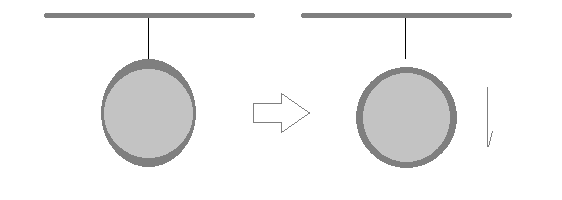Without anything happening, time stops. An observer watching a space void of photons will note that nothing happens. An observer inside a space virtually void of photons will note that everything around him or her happens at an accelerated pace.
The photon is tied up to time through its ability to carry energy.
The neutrino on the other hand, carries no energy, or so little of it that it can be ignored.
How then, is it possible for the neutrino to be associated with the electric and gravitational force?
The answer to this lies in the fact that some changes do not require any change in energy, and gravity is a prime example of this.
Let us consider a rock held in the hand of a person.
The person can throw the rock up in the air by giving it some of his or her energy.
The energy to send the rock up comes from the person. It is communicated via photons.
Then the rock moves upwards. But gravity pulls it down to Earth again.
It appears that gravity is performing work. However, no work is done. Energy is simply changing its form from kinetic to potential, and then back to kinetic as the rock comes back to Earth.
As far as the rock is concerned, no energy is added or subtracted during its flight. It was only at the start of its journey that energy was added to it, and it is only at the end that energy is lost as the rock hits Earth, sending photons in all directions.
Something to the same effect is happening inside electric fields. There is no energy in the field itself. If there is any energy given to any object affected by the field, it is given to these objects by external contributors.
Neutrinos do not communicate energy. Only photons do this. However, there is a lot of action that can take place without any energy being applied. The trick is to identify the cases in which energy is required and the cases where it's not. If energy is required, photons have to be present in order to communicate it.
This means that a rock will fall to the ground, even if there is no time. An observer dropping a rock into a room void of photons will see the rock falling while at the same time observing that time has stopped.
It will appear as if the rock is moving at an infinite local speed. However, all that is happening is that the clock, which requires energy to work has stopped, while the rock, which requires no energy to accelerate continues to fall.
Also, a lone photon traveling through the same space will appear to move infinitely fast.
The conclusion to this line of reasoning can be found in the chapter on Kinetics of my latest book.
 |
| Ball falling due to gravity |
No comments:
Post a Comment